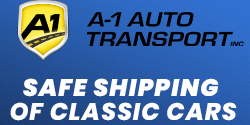Theresa said the same thing the other day!! LOL. I think I married your sister!!You're going to need a train engineer hat.
You are using an out of date browser. It may not display this or other websites correctly.
You should upgrade or use an alternative browser.
You should upgrade or use an alternative browser.
For all of You Train Lovers
- Thread starter khryslerkid
- Start date
66ChargerHI-PO
Well-Known Member
66ChargerHI-PO
Well-Known Member
6002 on its test run up the Blue Mountains
Cockburne, on the SA-NSW border was the locomotive changeover point between the SAR and Silverton Tramway for South Australian trains to and from Broken Hill. 409 is readying for departure time of the Adelaide Express (ex Broken Hill) while 400 is waiting for its next assignment
66ChargerHI-PO
Well-Known Member
66ChargerHI-PO
Well-Known Member
We took the "snow train" ride out of N. Conway last February.
O. Winston Link 1914–2001
Y-6 Locomotive on the Turntable, Shaffers Crossing Yards, Roanoke, Virginia
YY1
Well-Known Member
All I know is the picture was taken in Goshen, VA.What is that?
Looks like C&O colors.
- Local time
- 2:09 PM
- Joined
- Mar 14, 2012
- Messages
- 18,374
- Reaction score
- 33,459
- Location
- Surrey, B.C. Canada
If you want to get more info on rail equipment, do a search on the car number (in this case MSTX 5610) and you'll find a lot of history on it. Including old pictures with different paint schemes.What is that?
Looks like C&O colors.
- Local time
- 2:09 PM
- Joined
- Mar 14, 2012
- Messages
- 18,374
- Reaction score
- 33,459
- Location
- Surrey, B.C. Canada
Understanding railroad markings. Pretty much every piece of rolling stock, whether freight or passenger, or the motive power (locomotives) have their own unique identifying number. Railroads can use two, three or four letters and up to six numbers. Such as this CN grain car, CN 100942.

This particular car is stenciled "Government Of Canada", because it was originally part of a government fleet designed to ensure sufficient grain car availability to get the product to market. That fleet was ended and the rolling stock was taken over by CN (and CP, who had similar cars on their lines).
If you see a car initial ending in 'X', it means that the car is not owned by a particular railroad, but rather a non rail company owns it. For example, you'll know this Exxon tanker XOMX 110302 isn't owned by a railroad due to the last X. A great many private and company owned rail cars have this X, just because someone doesn't own a railroad doesn't mean that they can't have a fleet of rail cars.

You can see on the previous grain car photo that there is brown paint just after the CN markings, when the car was government owned it had the markings CNWX, and after being taken over by CN it was altered.
One of the largest pools of lease cars is run by the TTX Company, usually painted their signature yellow. They keep a large pool of flatcars, container cars, boxcars and auto racks in service. Many class one railroads use these in quantity, because for business purposes it means that they're not carrying the depreciation or repair and maintenance costs, instead paying for the use on a trip basis, so you'll commonly see TTX cars on every major rail line in the continent. So if you've ever wondered what that TTX railroad was, and why you don't see TTX locomotives, that's the reason - it isn't a real railroad. By the way, TTX originally stood for Trailer Train.

This particular car is stenciled "Government Of Canada", because it was originally part of a government fleet designed to ensure sufficient grain car availability to get the product to market. That fleet was ended and the rolling stock was taken over by CN (and CP, who had similar cars on their lines).
If you see a car initial ending in 'X', it means that the car is not owned by a particular railroad, but rather a non rail company owns it. For example, you'll know this Exxon tanker XOMX 110302 isn't owned by a railroad due to the last X. A great many private and company owned rail cars have this X, just because someone doesn't own a railroad doesn't mean that they can't have a fleet of rail cars.
You can see on the previous grain car photo that there is brown paint just after the CN markings, when the car was government owned it had the markings CNWX, and after being taken over by CN it was altered.
One of the largest pools of lease cars is run by the TTX Company, usually painted their signature yellow. They keep a large pool of flatcars, container cars, boxcars and auto racks in service. Many class one railroads use these in quantity, because for business purposes it means that they're not carrying the depreciation or repair and maintenance costs, instead paying for the use on a trip basis, so you'll commonly see TTX cars on every major rail line in the continent. So if you've ever wondered what that TTX railroad was, and why you don't see TTX locomotives, that's the reason - it isn't a real railroad. By the way, TTX originally stood for Trailer Train.
I liked the countryside, mountains and the color of the rocks in the area. Against the darker colors, this stuck out as a nice contrast, so this seemed like the train for me, so I bought this. I think I now have eight cars and adding. I know more about the diorama than the actual trains. I think they said the locomotive, passenger and caboose should represent one company and they could pull multiple rail cars from different companies in the rest of the load. To late for to much protocol, I'm on a roll. I finished the track on both sides, ran my main power lines, wired in all my track joiners feeds and isolating blocks. All I need now is to wire the track to my DC and DCC boxes through a switch. Then I'll start building the town first.




Last edited:
Similar threads
- Replies
- 105
- Views
- 5K
- Replies
- 0
- Views
- 375
- Replies
- 94
- Views
- 8K
- Replies
- 18
- Views
- 2K
















